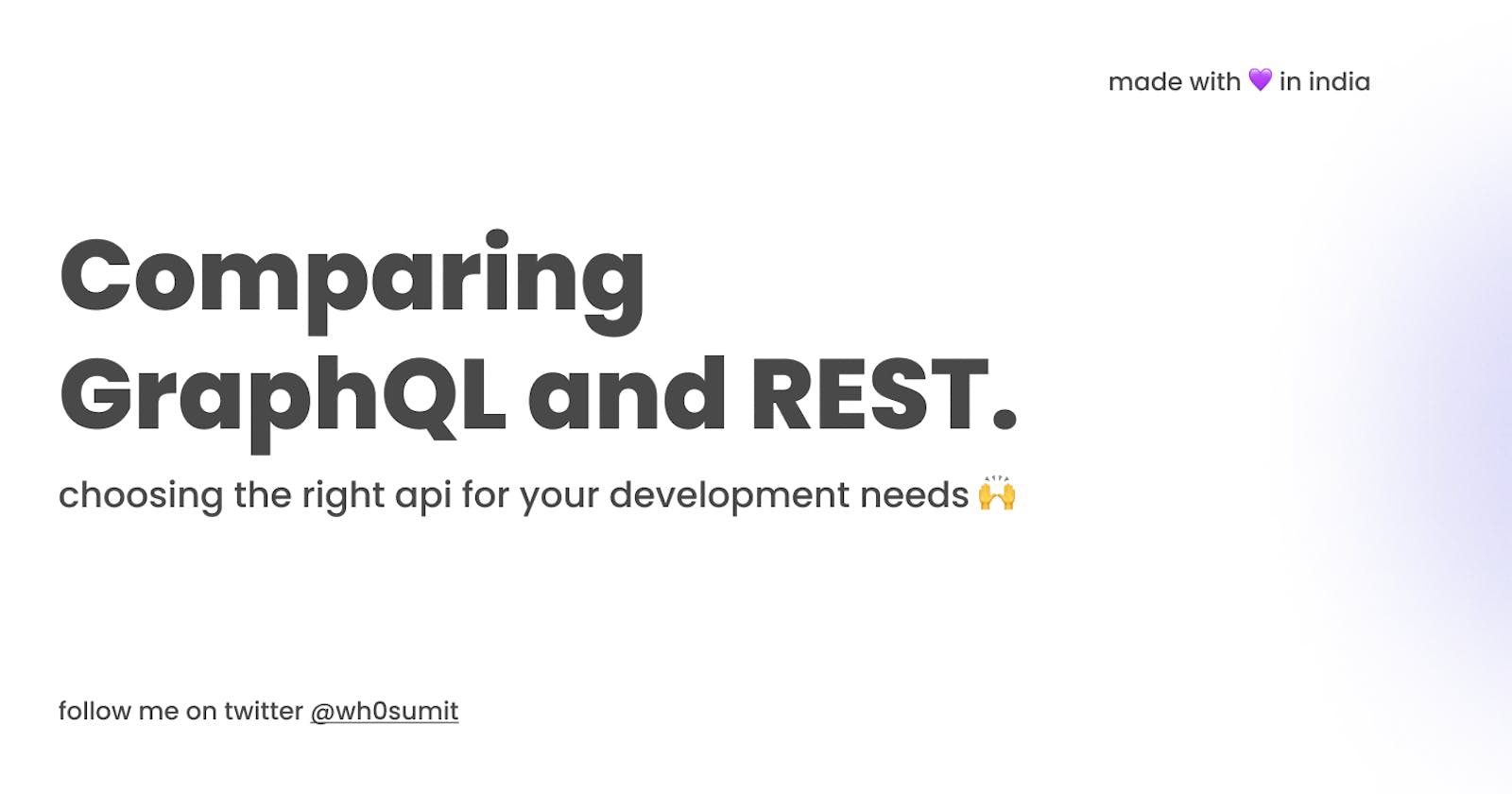Comparing GraphQL and REST 💜
choosing the right API for your development needs 🙌
APIs play a crucial role in connecting front-end applications with back-end servers, two popular API architectures, namely REST and GraphQL, have emerged as powerful tools for developers.
In this blog, we'll dive into the journey of two developers, Raju & Baburao, as they explore the decision of whether to use REST or GraphQL in their respective projects, and then, we'll explore the strengths, use cases, and benefits of each approach, providing a beginner-friendly understanding with practical examples 📝
Meet our characters ~ Raju & Baburao:
Raju, an experienced developer, is tasked with developing a large-scale e-commerce website, his goal is to fetch data about products, categories, and customer orders from the server to populate the user interface, familiar with GraphQL's flexibility and efficiency, Raju chooses GraphQL for his project.
Baburao, a passionate developer in the realm of social media applications, is building a platform where users can follow each other, post content, and receive notifications. Intrigued by REST's simplicity and wide adoption, Baburao decided to implement REST for his project.
Now, Let's first understand REST:
REST, or Representational State Transfer, is an architectural style commonly used in designing networked applications. It relies on predefined endpoints or URLs to perform specific operations on resources. RESTful APIs utilize HTTP methods, such as GET, POST, PUT, and DELETE, to interact with the server.
Baburao recognizes that REST is well-suited for his social media platform, the application primarily involves retrieving and modifying data using a set of predefined endpoints. REST's simplicity, scalability, and robust tooling support make it an excellent choice for his project.
Now, Introducing GraphQL:
GraphQL is a query language and runtime for APIs developed by Facebook. It allows clients to request specific data structures, minimizing the amount of data transferred over the network, with GraphQL, clients can define the shape and depth of the data they need in a single request.
Raju identifies the advantages of GraphQL for his e-commerce website. His application has complex data requirements, where different components require varying data sets, by leveraging GraphQL's flexible querying capabilities, Raju can retrieve precisely what he needs, reducing issues like over-fetching and under-fetching.
Use Cases and Benefits:
REST :
CRUD Operations: REST excels at handling Create, Read, Update, and Delete operations on resources.
Caching: REST's stateless nature and HTTP caching mechanisms enable efficient caching strategies, enhancing performance.
Multiple Clients: REST APIs are suitable when multiple clients, such as web, mobile, or IoT devices, need to consume the same API.
Rest Example :
# Retrieve a list of products
GET /api/products
# Create a new product
POST /api/products
# Update a product
PUT /api/products/{id}
# Delete a product
DELETE /api/products/{id}
GraphQL :
Dynamic Data Requirements: GraphQL shines when the client's data needs are complex, dynamic, and subject to change.
Single Request Efficiency: GraphQL minimizes network overhead by allowing clients to request multiple resources in a single query.
Rapid Development Iteration: With GraphQL, developers can quickly iterate and evolve the API without impacting clients using outdated versions.
GraphQL Example:
# Retrieve a list of products with specific fields
query {
products {
id
name
price
}
}
# Create a new product
mutation {
createProduct(input: { name: "New Product", price: 19.99 }) {
id
name
price
}
}
Look, choosing between REST and GraphQL depends on the specific requirements of your project. REST is a solid choice for applications with straightforward, predetermined data needs. On the other hand, GraphQL excels when dealing with complex and dynamic data scenarios.
By understanding these strengths, use cases & benefits of each approach, developers like Raju and Baburao can make informed decisions that lead to efficient and scalable API solutions.
Thank you for joining me on this journey exploring GraphQL and REST, I hope this blog has provided you with a clearer understanding of these API architectures and their respective use cases.
Happy Coding 💜
Thank you so much for reading this blog!
If you enjoyed this content and found it helpful,
be sure to follow me: Sumit Singh for more informative and engaging blogs 🧾
You can also connect with me on Twitter at twitter.com/wh0sumit,
where I share valuable insights and updates on various technical topics 🙌
Stay tuned for more exciting content 💗
Note: The content of this blog has been tailored to provide a beginner-friendly understanding of GraphQL and REST.
